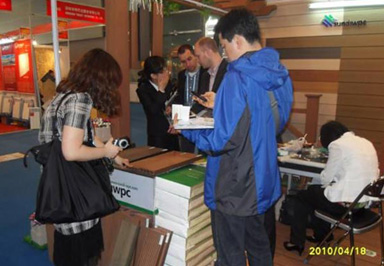As for outdoor floor decoration, people tend to choose wood decking with diversitifed colors instead of marbles to pursue for distinguished decoration style. However, when choosing wood floors, it is difficult to choose between anti-corrosion wood decking and WPC decking boards.
Anti-corrosive wood is made of ordinary wood that is soaked in a chemical preservative solution or high-pressure penetration. So it is anti-corrosion, moisture-proof, anti-fungal, anti-ant, anti-mildew and waterproof properties. Common preservative wood materials are Russian pine, Nordic pine or domestic ordinary pine and fir. In addition, there is also a kind of carbonized anti-corrosive wood, which is to carbonize the effective nutrients of the wood at high temperature to block the nutrient chain for the survival of decaying bacteria.
WPC, also known as plastic-wood, refers to a composite material that uses polypropylene, polyethylene, polyvinyl chloride and other plastics instead of usual adhesives, and is mixed and extruded with more than 35%-70% natural plant fiber powder.
First, the density of WPC materials is 1.2-1.3g/cm³, while the density of conventional wood used for anti-corrosive wood is only 0.4-0.5g/cm³; the loose fiber structure of anti-corrosive wood makes it easy to absorb moisture in the natural environment. The accumulated moisture will cause mold to grow in a short time, and produce swelling, cracking, moldy and blackening; and WPC material has a compact structure, and the density is about three times than that of conventional anti-corrosive wood, almost completely resisting the moisture in the natural environment. So without the nourishment of moisture, there is no living environment for mold.
Second, WPC materials are made by fusion and extrusion of thermoplastics and natural wood fibers at high temperature. The materials contain no moisture or nutrients. Natural bacteria are also wiped out during high-temperature processing, which is completely unsuitable for bacterial growth and reproduction. Plastic-wood material has a dense inter-molecular structure and a hard surface, which is not suitable for insects and ants to eat. The opposite is true for preservative wood. Its loose structure and easy absorption of water make it a high-nutrient breeding base for bacteria. The softness of the fiber also makes it more susceptible to insects, ants, and rodents.
Therefore, it can be concluded that WPC decking boards is more anti-corrosive than anti-corrosion wood flooring, and wpc decking boards has many other advantages.


